I've been wanting to apply the techniques I've learned from Forest Forensics: A Field Guide to Reading the Forested Landscape, by Tom Wessels (2010). The title of the book is well chosen, because Wessels's expertise is deducing the the history of the land using evidence of human use (or lack thereof). The book is organized as a dichotomous key.
1A. Is the land smooth and even? Go to 2A.
1B. Is the land not smooth and even? Go to 2B.I'm just a beginner at these techniques, but here's a few things I found in the Phantom Forest Conservation Area:
The ground is not smooth and even. When live trees are blown down in storms, the base is pulled from the ground roots and all. As in the photo above, as cavity or "cradle" is left where the tree once stood. As the roots and trunk decay and the dirt falls away, a mound or "pillow" is left. This area is too uneven to have ever been plowed crop land, but neither is the forest old growth. The windblown trees are not decayed and there is no evidence of old, eroded pillows and cradles.
There are many double and multiple-trunked trees, which can be evidence of past logging. The main trunk was harvested, and sprouts—now mature trees—grew from the roots. Like almost every inch of Missouri, this site was probably logged in the first half of the 20th Century.
Barbed wire suggests that after logging, at least the downhill portion of this site was once a cow pasture. I don't know how to age the barbed wire, but the fence has been long abandoned.
The spreading limbs of the mature oaks also show that the tree grew in an open field, not shaded in a thick forest.
Next to an old, cement foundation, an abandoned tub is overrun by non-native winter creeper. Other non native plants such as yucca and white pine grow near the old home site.
Above the old home, I came upon this plaque. I didn't expect to find the answer to the riddle of the name of the conservation area so easily. The mysterious Ray Moore was a Missourian. The Phantom strikes again!
 |
| Image courtesy of Wikimedia Commons |
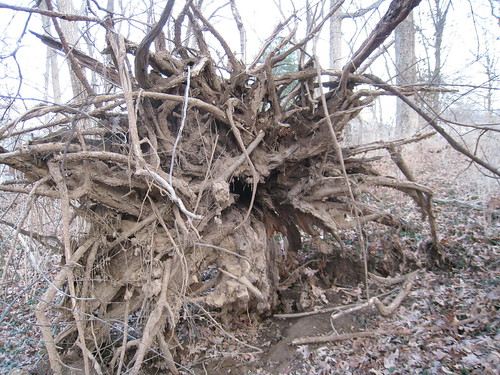
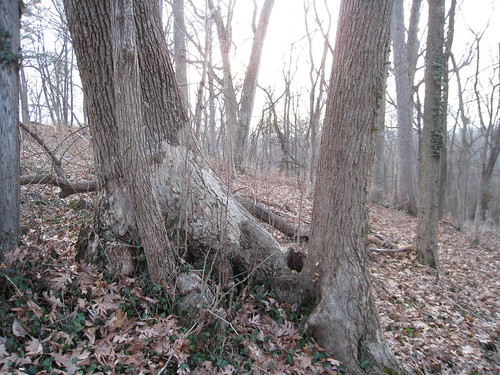
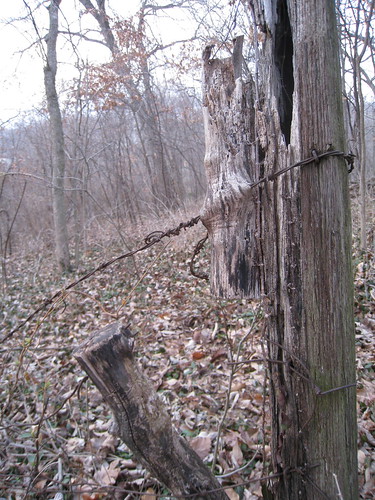
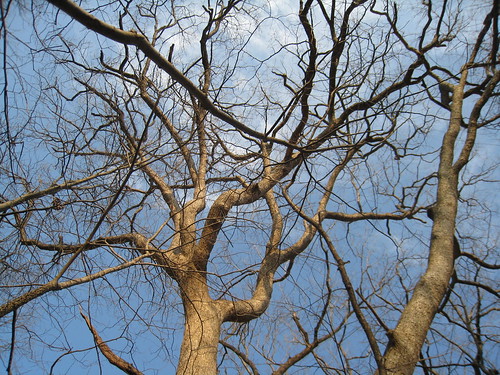

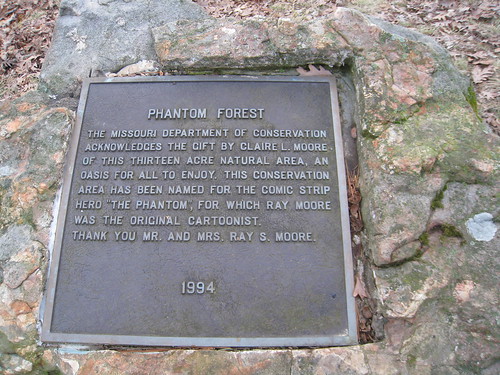
Was that his bathtub?
ReplyDeleteWhat a cool-sounding book - on road trips I sometimes entertain myself by trying to "read" forests or stands of trees that I'm driving through to guess at their history, looking at things like how the trees are spaced and whether they're all the same size or a mix of sizes. Even with the little I know, it's incredibly rewarding to be able to make an educated guess about the management practices being used on a plot of land just by observing.
ReplyDelete@Mike: I think you're right! Like the Paul's grandfather in A Hard Day's Night, the Phantom was very clean.
ReplyDelete@Rebecca: It is rewarding. I've been having a lot of fun with Forest Forensics! Before reading this, I never thought much about the old scars on tree trunks, etc.
Wessels' book sounds very interesting. The snippets you've included here coincide with what I've seen and known about our place. Even though my primary interest is nature, it's impossible not to wonder about the people who've lived on our land before us, and the changes they made.
ReplyDeleteEverything we learn helps us find more treasures in nature! Thanks for visiting!
ReplyDelete